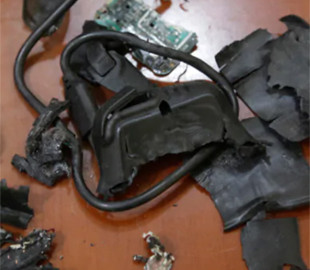According to experts, the explosives inside the pagers could be placed in such a way that other components played the role of shrapnel .
On Tuesday, September 17, thousands of portable pagers purchased by the Hezbollah group were simultaneously detonated in Lebanon. How such an attack became possible is discussed in the Forbes article.
Is it possible to hack the software of pagers
As noted in the publication, at first it was assumed that the cause was a software hack, which led to overheating and explosion of pager batteries. The batteries of many mobile devices can be vulnerable to a condition known as thermal overclocking. When the battery heats up, a chemical reaction starts inside the battery cell, producing more heat. Thus, within seconds, a battery can heat up to 400°C and explode.
The article points out that overheating of batteries has been the cause of a number of high-profile incidents, such as a series of fires involving Galaxy phones in 2016, a series of burns from e-cigarettes and a laptop catching fire on a Lufthansa flight in 2023. However, such explosions usually occur when battery cells are damaged or there are manufacturing defects. Most batteries are inherently safe under normal use.
Portal experts emphasized that it is possible to create a battery that would overload on command, but this would lead to fires, not explosions, as was the case in Lebanon. Judging by the videos published on the network, the pagers contained something more explosive.
Could the pagers have been mined
A second theory suggests that the bombers attacked the supply chain by planting explosive devices in the pagers either during the manufacturing stage or during transport from the manufacturer to the users. The weight of the AR-924 pagers that exploded in Lebanon is only 95g, including the battery, so this would require a very small bomb.
According to the publication, one of the most compact explosive devices ever used is the American BLU-43 Dragontooth mines. The US Army dropped these munitions from the air in Vietnam to make trails impassable. The diameter of Dragontooth is about 5 centimeters, weight — less than 20 g. These mines are filled with 9 g of nitroparaffin-based liquid explosive. A similar amount of explosive substance can theoretically be introduced into a “pager” bomb. At the same time, Dragontooth mines usually did not kill, but wounded, leading to foot injuries.
200% Deposit Bonus up to €3,000 180% First Deposit Bonus up to $20,000In addition, the article mentions the use of even smaller mines known as “gravel mines” or “button bombs” by the Americans in Vietnam. These are postage stamp-sized cloth bags filled with shock-sensitive explosives. The mines were stored in a liquid that evaporated after the mines were dropped and activated. “Gravel mines” contained 9 g of lead azide/hexogen explosive and were not very effective. The American military called them “little more than an obstacle.” Later, the US also developed extremely small munitions for UAVs, but the data on them is largely classified.
Why pagers have become deadly
As noted in the publication, the explosion itself is not an effective lethal mechanism. Anti-personnel weapons usually contain a large amount of shrapnel, as flying metal causes more serious injuries than an explosion. For example, the Vog-17 grenade contains only 35g of explosive material for a weight of 350g.
With this in mind, portal experts believe that the explosive device inside the pager could be placed in such a way as to use other components of the pager as shrapnel . Since pagers are usually worn on the belt with one side facing the body, it would be possible to design a directed explosive device.
With reports of serious injuries among the militants, analysts concluded that the device was “particularly lethal for something so small.” The publication also believes that this attack appears to be a one-off, as in the future militants will be fully aware of the risk of explosive devices hidden in portable gadgets. literally thousands of opponents at the same time”, — the article reads.
We will remind you that on September 18, a new series of explosions thundered in Lebanon. Portable radio stations used by the Hezbollah group were detonated in the south of the country and in the southern suburbs of Beirut. One of the explosions occurred near a funeral for those killed in a simultaneous attack on wireless communication devices that had occurred the day before.
Experts also said whether smartphones could be used in operations similar to the detonation of pagers in Lebanon. In theory, hackers could exploit vulnerabilities in a smartphone's firmware to cause it to overheat or crash, but mass attacks would be much more difficult to pull off.

